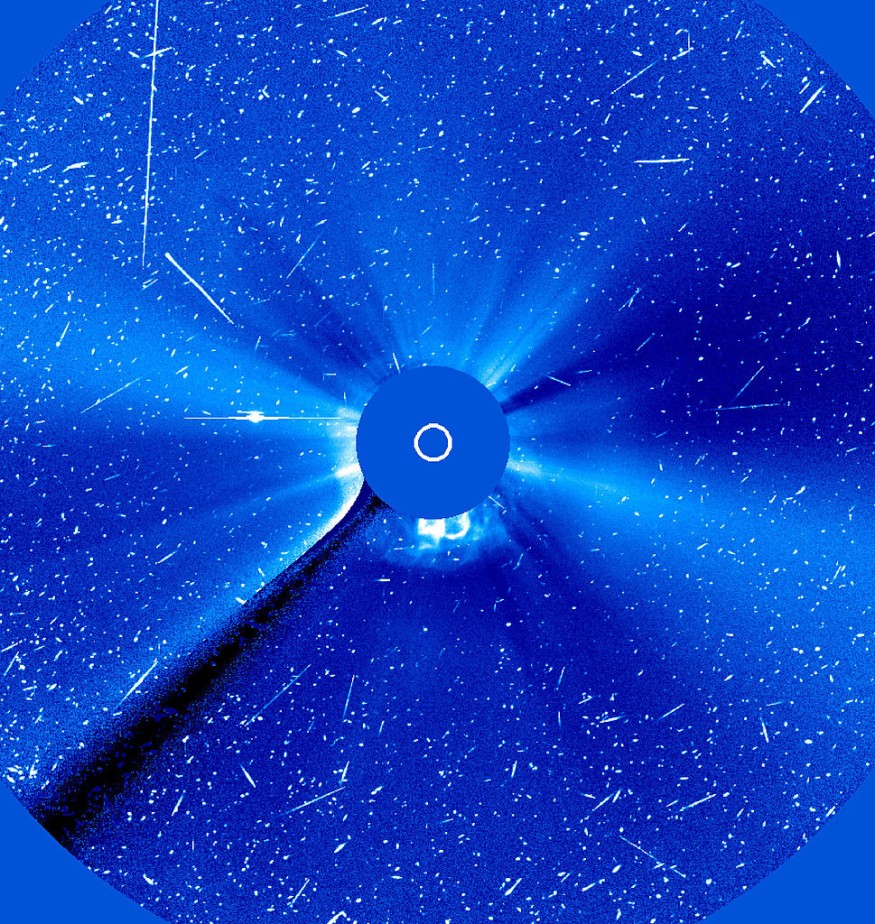Solar storms, like solar flares and coronal mass ejections (CMEs), have shown some hint of a pre-emptive strike before hitting Earth.
However, emerging reports on Wednesday, June 29, indicated that supercharge particles in the form of a geomagnetic storm had struck our planet without warning overnight UTC time from Saturday to Sunday, June 25 to June 26.
Details regarding the potential impact of the solar disturbance is still limited, as scientists still attempt to understand what transpired.
Disruption to radio frequencies, satellite signals, and power grid systems are possible in the coming days.
Furthermore, succeeding and related solar outbursts cannot be ruled out.
The space storm from the Sun coincided with the height of our solar system's rare planetary alignment between Venus, Mercury, Mars, Jupiter, and Saturn on June 26.
The five-planet alignment reportedly caused sudden auroras over the northern hemisphere night sky. Still, there is no evidence that the storm is connected with the said cosmic alignment.
In recent months, multiple solar storms have emitted high-energy particles that have struck Earth not only as a geomagnetic storm but also as a solar radiation storm and a radio blackout.
During this period, there are instances where related blackouts were reported in Southeast Asia, Australia, and Europe.
Geomagnetic Storm

Scientists classified the solar eruption as a G1-class storm, which is capable of causing power grid fluctuations, satellite operation impact, and global positioning system (GPS) disruption, according to reports cited by Live Science.
The classification is based on the NOAA Space Weather Scales from the website of the Space Weather Prediction Center (SWPC), which indicated that a G1-class is the weakest out of a five-tier scale where G-5 is the strongest and most extreme.
While the abrupt solar event is relatively weak, the timing of its occurrence is still unique since it apparently hid under the radar of Earth's space weather authorities.
In addition, the geomagnetic event could still affect spacecraft operations and affect migratory animals.
It can also cause an aurora borealis in the northern hemisphere, which will be visible in northern Michigan, Maine, and other areas adjacent to it.
Also Read: Solar Storm Alert: Fresh Geomagnetic Storm Warning Issued, Earth Expected to be Hit on Thursday
Solar Activity
The National Aeronautics and Space Administration (NASA) said that solar activities like solar flares, CMEs, solar winds, and solar energetic particles are triggered by the Sun's magnetic field.
The entanglement of these magnetic field lines results in the occurrence of a solar storm, as mentioned earlier in this article.
NASA, along with the NOAA, previously spearheaded an event which announced the start of the current Solar Cycle 25 in December 2019 as part of the 11-year solar cycle.
Further solar storms are projected to increase in the coming years, especially at the cycle's estimated solar activity peak in 2025.
Prior to Wednesday, various reports predicted that a massive solar eruption could be heading toward Earth and hit our planet at any moment.
In one of these reports, the Tech Hindustan Times called the space weather event as a solar tornado, which reached 20,000 kilometers from the Sun's surface.
In early June, space weather officials also warned that dangerous solar storms were heading to Earth.
© 2025 NatureWorldNews.com All rights reserved. Do not reproduce without permission.





